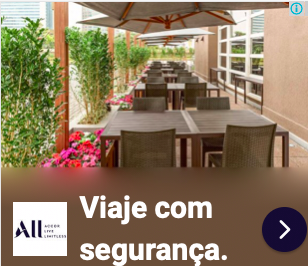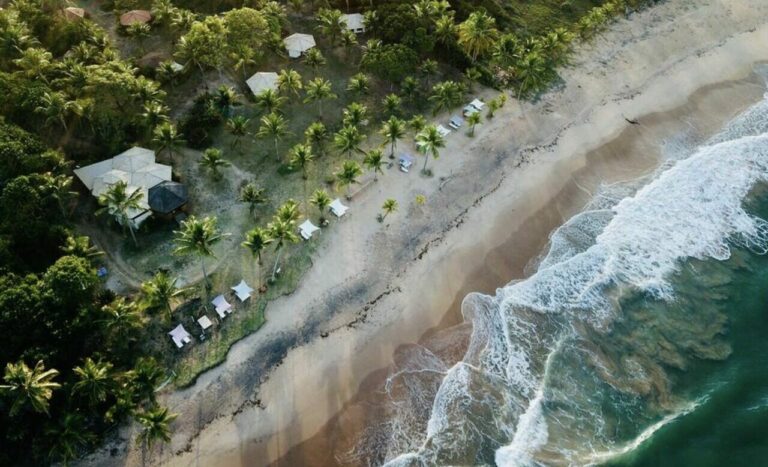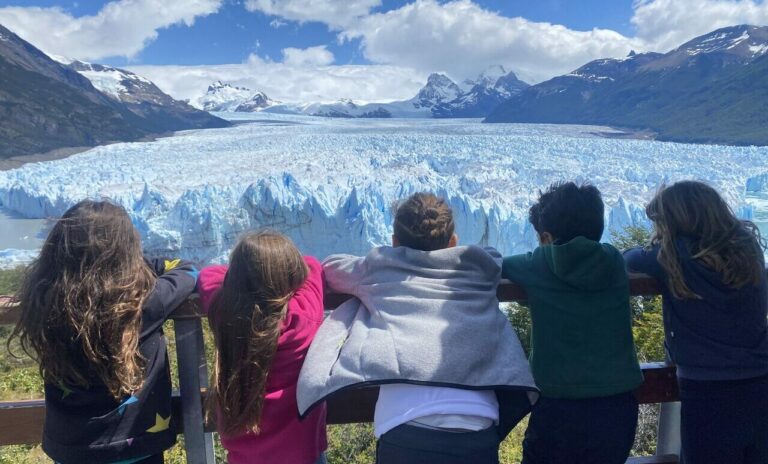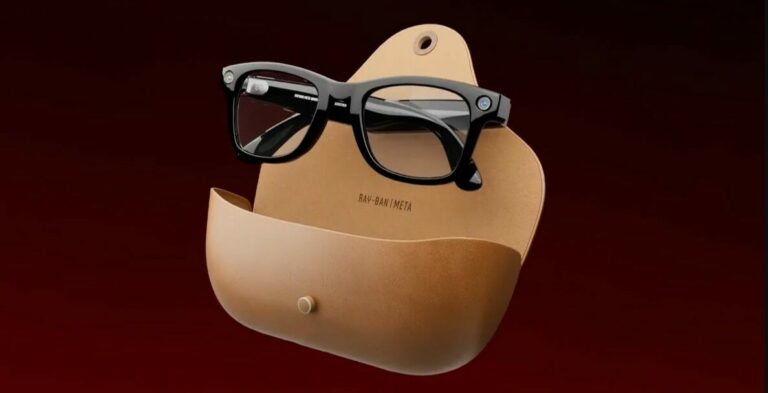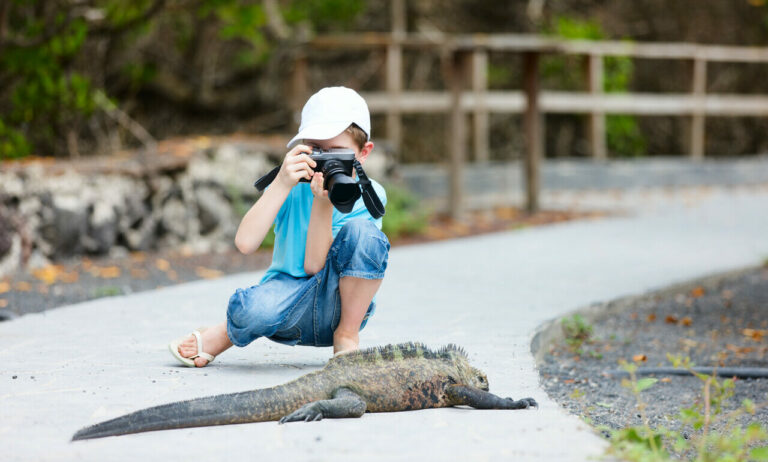
Irena Freitas: the illustrator of the award-winning São Paulo Guide
Meet the creative and colorful illustrator of several children's books, including the recently awarded São Paulo guide
- By Sut-Mie Guibert
Irena Freitas was born in Espírito Santo but moved to Manaus at a young age, where she grew up and still resides today. She may seem delicate and friendly, but don’t be fooled: behind that girlish face lies a brilliant illustrator with over 24 nominations and awards! The latest accolade she received was for her work on “São Paulo,” a fun guidebook created in collaboration with writer Mauro Calliari for the city’s anniversary last year. The book just turned one year old and was recently gifted with the Prize from the Bologna Children’s Book Fair 2024. Amidst her busy schedule of travels and book launches, we managed to secure an exclusive interview with this passionate advocate for children’s literary worlds.
Tell us a bit about your story and how the book São Paulo came about?
“I’ve always loved drawing, and for a while, I thought about dedicating myself more to that side of illustration; not necessarily for books, but I also work a lot for newspapers, magazines, and occasionally I do advertising. And I’ve always loved books, but I wasn’t sure exactly how to break into that market because I didn’t want to write just text or just image books. So I think the illustrated book is that middle ground, where we need both text and images. I think it was a way I found to communicate that was more natural for me.”
São Paulo is a book that has no age. We say it’s “for children” because of the illustrations, because everything is very colorful, but it’s not specifically for children…
“I strongly believe that books have no age, because ever since I was little, I enjoyed books from different age groups. I think the real difference is that when you’re working with a children’s audience, there are more graphic themes that you need to consider, that perhaps exposing a child to this content in this way is not the most suitable. But I don’t think there’s anything that a child can’t understand. For example, I have a book, The Forest, which is about the wildfires here in the Amazon, and I don’t delve into political issues, but into the concept that the wildfires are happening, which we see in the news. So I always try to find ways to bring things from everyday life, from cities, from the places we live, in a way that there can be this dialogue between children and adults.
That’s why I don’t think of a book that will only please children or only please adults, because I think the most important thing about a book is that we feel comfortable with this dialogue between children and adults; the most important thing is that we communicate, that we convey our ideas, and that the reader also becomes part of it.”
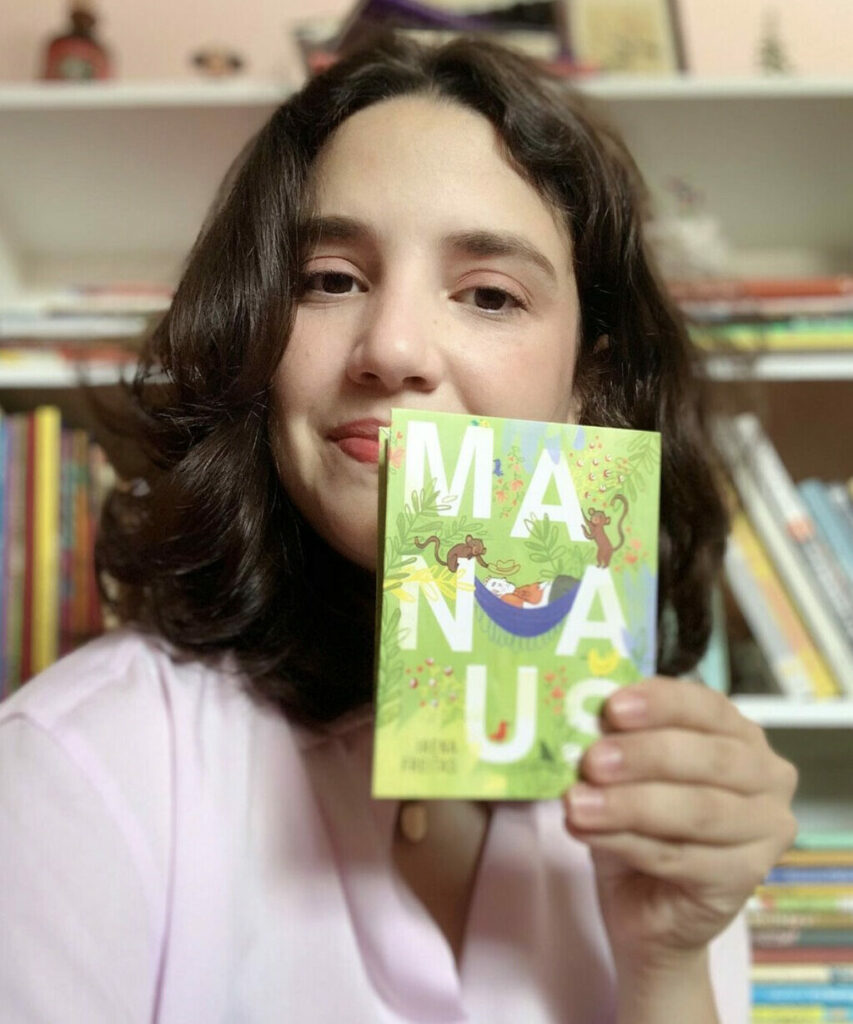
You live in Manaus; in fact, the first book in this collection of city-books is about Manaus, in the concept of an object-book, a game, meant to be read together.
This series of books was actually part of my master’s thesis. I was studying object-books precisely. At the time, I was sketching a lot of things I saw in my daily life. I would go out for walks, stroll in the park, draw the people I saw, the objects, sit in cafes to draw… So, it was kind of creating these books while being in cities.
During this time, I was living in the United States for my master’s degree, so I made three books based on the cities where I lived: Manaus, my hometown, Savannah, in the United States, where I was, and Porto, in Portugal, where I did an exchange program through the university. So, I made about these three places, and they were books from my point of view.
After I graduated, I sought out publishers to see if any of them were interested in publishing, and that’s when I met Edição Barbatanas, who work a lot with object books, and they were very interested in the book about Manaus.
São Paulo fits very well into this type of project because it is a megalopolis: a lot is happening, many landscapes, many people, situations. And you included various details, both in the illustrations and in the text behind, which are much more detailed and serve as a great guide for tours.
For the first one, about Manaus, I wrote and illustrated it because I am from Manaus. When we were planning the one about São Paulo, we thought it might be nice to invite someone to write the text who lives in São Paulo. Mauro Calliari is an urbanist; he is someone who lives in the city, who strolls around it a lot. So, we extended the invitation to him. And he also has this architectural perspective, precisely, on monuments, architecture… and São Paulo has a lot of that, both in its buildings and in its environment. Anyway, it was a perfect fit.
São Paulo is so big that when I was planning the illustrations, I always kept thinking: wow, something will be missing, this will be missing!
And the coolest thing is that it functions as a souvenir. When you travel, you want to bring something home. And it’s a small booklet that doesn’t take up space in your suitcase. It’s very easy to bring as a gift.
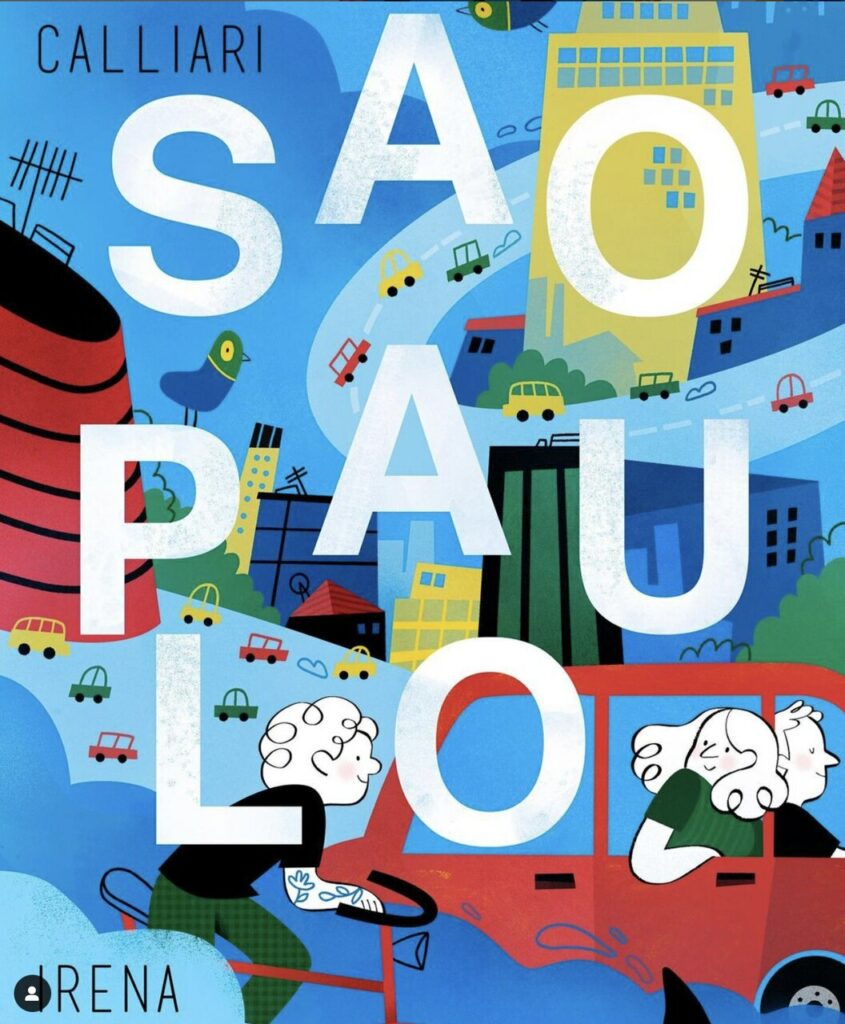
In cities, where do you find inspiration?
Every city is so different! There’s always something. So it’s more about observing the routine, what’s special about it. I usually make a list: what does this city have that no other city does? Here in the Amazon, there are fruits that don’t exist in other regions of Brazil, there are fish that only exist in the Amazon. So I try to fit in all the differences that each region has.
When I was a child, I didn’t like it when a book had a lesson, a moral. So I try to think of things that are interesting from a child’s point of view. You’re in the park, the statues in the park, the animals… I always try to look for colors that catch children’s attention, because I could make a book about São Paulo extremely gray, but it wouldn’t be as interesting. I tried to search for other references: for example, São Paulo’s flag has a very bright red, so bring a little more of that red, bring the green from Ibirapuera, bring the idea of a crowd with many people wearing different things, which I think is something a child perceives more than, for example, the pollution that exists in São Paulo. Certainly, a child will notice all of this before noticing other things, which are already of an adult perception.
How do children interact with their books?
Once, a mother sent me a photo of her daughter taking these books (São Paulo and Manaus) and using them as scenery for her toys. She opens them, builds little houses, sets up the dolls, and the backdrop for the story is the city of São Paulo. It’s something I never thought a child could do, but I found it super interesting.
I think most children are very open to talking to someone. I remember once I held an event where I taught how to make a book with a fold. Some children said, “It’s too small! How do I make it bigger? Can we glue pages together to make them bigger?” Each of them wrote stories. Some said they wanted to draw their city, too. Others wanted to draw, while some just wanted to write. Usually, it was the older ones who were shy about drawing. Then there were those who invented an entire story. It was very interesting to see what each one brought.
This is a good idea for a child who travels, too. Drawing a little or writing about what they experience during the day.

A message to parents?
The habit of reading is paramount: try to find books that your child enjoys reading and do so consistently. Sometimes, I think parents tend to project: “I liked this book, so my child must like it too,” instead of asking what the child’s interests are.
Even if it seems trivial to you, it’s important to spend half an hour reading that book with your child before bedtime, in the middle of the afternoon. Surely you’ll find common ground and it will generate dialogue, as it’s a great way to communicate with your child.
Services
Things the Way Family love to pack in their suitcase:
Gate
Eletronics for the travel: smartphone, drone, câmera, charger,…
Destiny
UV clothes, bikinis, caps, diving goggles, snorkel mask and other accessories…











